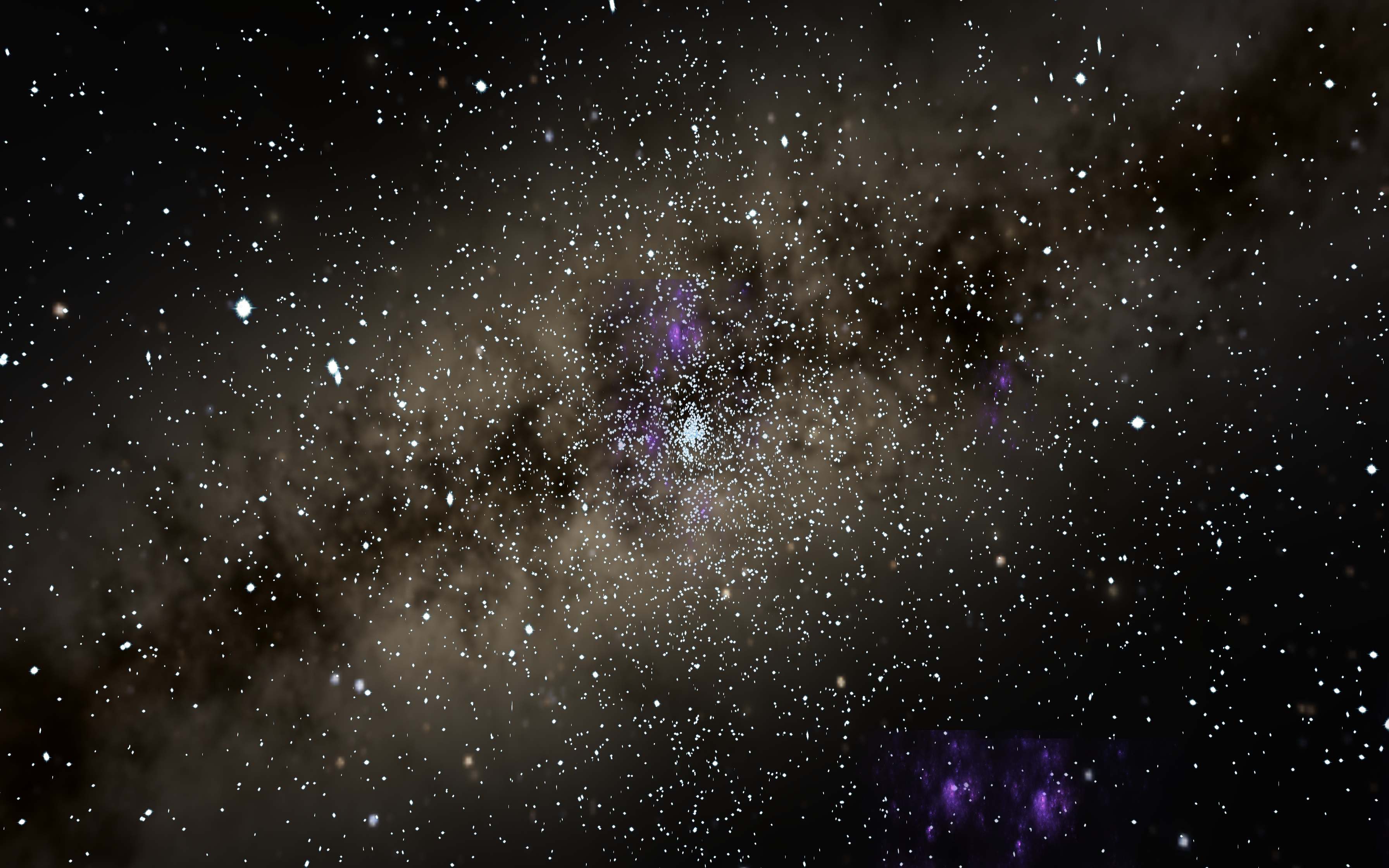Galaxy Instanced Rendering
By Lucas Li
The purpose of this Galaxy project is to create an OpenGL software that uses instanced rendering to draw a galaxy full of stars. The project will be developed to create a visually attractive picture of a galaxy while also serving as a learning tool for visualizing mass particles using instanced rendering.

To generate a 3D environment, the program will make use of the OpenGL graphics library. The stars in the galaxy will be displayed using instanced rendering, which is a technique for rendering numerous instances of the same object with varied transformation parameters quickly. The program will accomplish this by utilizing a particle system that generates a vast number of star instances in real-time.
Overview
The project is a software development project that uses modern technologies and frameworks to create a graphics-intensive application.
- C++11 as the main language
- Modern OpenGL/GLSL as the graphics API
- GLEW for cross-platform initialization of OpenGL
- GLFW for windowing
- Eigen for linear algebra
Assets
Besides using a sphere.OBJ file for the skybox of the Galaxy, the following textures are needed to produce a realistic look of the Galaxy:
- Star
- Gas
- Galaxy
Implementation
Instead of creating individual star objects and rendering them separately, we can use instanced rendering to render multiple instances of the same star with different transformation parameters.
CPU
The CPU is in charge of activities such as data management, and logic in this project. To do this, we first create a VAO (Vertex Array Object) and a VBO (Vertex Buffer Object) to hold the star mesh data. We also create another VBO to hold the transformation data for each instance of the star.
//generate the VAO
glGenVertexArrays(1, &VertexArrayID);
glBindVertexArray(VertexArrayID);
//generate vertex buffer to hand off to OGL
glGenBuffers(1, &VertexBufferID);
//set the current state to focus on our vertex buffer
glBindBuffer(GL_ARRAY_BUFFER, VertexBufferID);
...
//generate vertex buffer to hand off to OGL
glGenBuffers(1, &InstanceBuffer);
//set the current state to focus on our vertex buffer
glBindBuffer(GL_ARRAY_BUFFER, InstanceBuffer);
Instanced rendering needs an object (containing the billboard) and an instance buffer (containing all positions). Using the star.png as the object, we’ll also need a position buffer for it. Here we created a position buffer contains 10,000 positions, having a spherical (pill-shape) distribution of positions, with exponentially more stars in the center than at the borders:
// create a new dynamic array of 10,000
glm::vec4 *positions = new glm::vec4[10000];
//A loop is run for 10,000 iterations to generate a random position for each instance.
for (int i = 0; i < 10000; i++){
// Randomize radius
float r = frand()* 200.0f;
// Randomize angle x
float ax = frand() * 2 * PI;
// Randomize angle y
float ay = frand() * PI;
// rotations around the x-axis and y-axis, respectively
mat3 Rx = rotate(mat4(1), ax, vec3(1.0f,0,0));
mat3 Ry = rotate(mat4(1), ay, vec3(0,1.0f,0));
vec3 v = vec3 (0,0,r);
v = Rx * v;
v = Ry * v;
// position vector is divided by 2.5 to flatten the distribution of the instances
// make the overall shape of the distribution more like a disk than a sphere.
v.y = v.y / 2.5;
positions[i] = vec4(v,0);
}
Next, we can copy to a new OpenGL buffer object, and make it instanced:
//actually memcopy the data - only do this once
glBufferData(GL_ARRAY_BUFFER, 10000 * sizeof(glm::vec4), positions, GL_STATIC_DRAW);
int position_loc = glGetAttribLocation(prog->pid, "InstancePos");
// Set up the vertex attribute
glVertexAttribPointer(position_loc , 4, GL_FLOAT, GL_FALSE, sizeof(vec4), (void *)(sizeof(vec4)));
glEnableVertexAttribArray(position_loc);
// Make it instanced
glVertexAttribDivisor(position_loc, 1);
The same thing will be duplicated for the gas object as well. After creating a VAO and VBOs to hold the gas mesh data, we can use glDrawArraysInstanced() to render multiple instances of the those mesh (eg. star), with the transformation data provided by the instanceVBO:
glBindVertexArray(VertexArrayID);
glDrawElementsInstanced(GL_TRIANGLES, 6, GL_UNSIGNED_SHORT, (void*)0,10000);
This will render the star mesh 10,000 times, with the transformation data provided by the instanceVBO for 10,000 instances.
GPU
The GPU, on the other hand, is in charge of handling graphics-related computations such as rendering, lighting, and texture mapping. In this program, the shaders are fairly simple:
Using the star shaders as an example. To make the inside stars rotates faster than the outside’s, we make the rotation matrix manually in the vertex shader. Since the rotation of star should be dependent on the radius (length(position)) of the star, we’ll need to get the distance from the star to the center first:
// distance to the center as rate
float rate = distance(InstancePos, vec4(0,0,0,0)) * 0.01;
Then, the rotation matrix are be calculated using the following equations with the rate being a multiplier:
Refering to Ry(θ) formula, we can come up with the rotation matrix around y-axis:
mat4 rotation = mat4(
vec4( cos(rot_angle * rate),0.0, sin(rot_angle * rate),0.0),
vec4( 0.0,1.0,0.0,0.0),
vec4( -sin(rot_angle * rate),0.0,cos(rot_angle * rate),0.0),
vec4( 0.0,0.0,0.0,1.0));
Lastly, we calculated the position from the instanced position buffer with the rotation:
// assign instanced position to each star
vec4 pos = M * vec4(vertPos,1.0) + InstancePos;
// apply rotation
pos = rotation * pos;
// send out position information for rendering
gl_Position = P * V * pos;
Diffuse light is also added to the star in the fragment shader, feel free to refer to the Earth Lighting project for further explanation and implementation.
Results

The galaxy project used OpenGL and instanced rendering to successfully render a large number of particles. By allowing the GPU to reuse the same vertex data for many instances of an object rather than providing a separate copy of the data for each object, instanced rendering proved to be a valuable technique for drawing large numbers of particles effectively. Instanced rendering substantially improves galaxy rendering efficiency, allowing the program to render 10,000 stars with ease. Without instanced rendering, the program would have to send the GPU 10,000 separate sets of vertex data, which would be wasteful and result in a considerable performance reduction.
